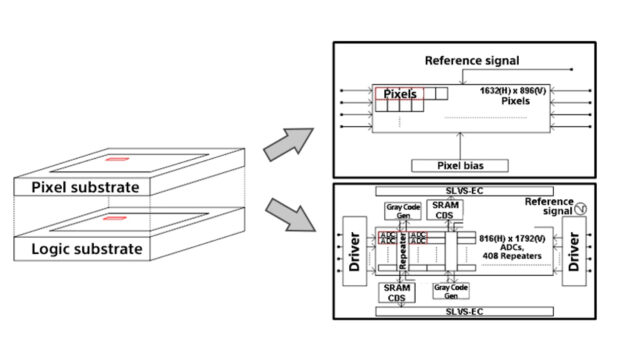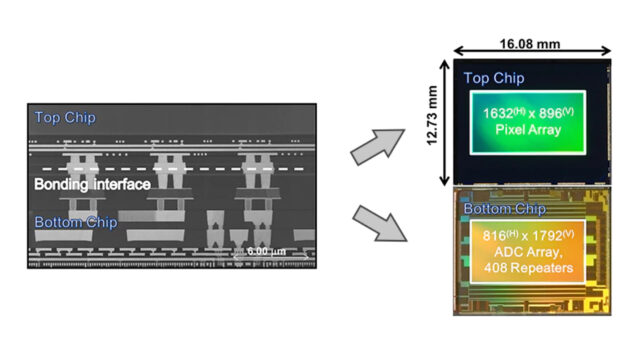
In a recent press release, Sony announced a 1.46 effective megapixel back illuminated CMOS image sensor which enables a global shutter function. Read below to explore more about this innovation.
This announcement is quite a breakthrough in terms of sensor design and function, but its 1.46 megapixel design means it’s not quite ready for camera implementation yet. Even though the press release is full of deep technical data, we’ll try to simplify it. Let’s start by explaining what the advantages of a black-illuminated CMOS sensor are.
Back-illuminated CMOS
In a back-illuminated sensor, the electric circuits which are used to carry the readout from each photosite are located at the back of the sensor instead of the front. This means that more light can reach the photosites, and thus less readout amplification is needed.
As a consequence and in practice, the design of a backlit CMOS sensor enables cameras to record images in lower light levels and with much less noise.
Pixel- parallel analog to digital (A/D) converter, in order to allow global shutter function
The sensor is equipped with a newly developed pixel-parallel (A/D) converter that enables global shutter, as explained by Sony:
“The new Sony sensor comes with newly developed low current, compact A/D converters positioned beneath each pixel. These A/D converters instantly convert the analog signal from all the simultaneously exposed pixels in parallel to a digital signal to temporarily store it in digital memory. This architecture eliminates focal distortion due to readout time shift, making it possible to provide a Global Shutter function, an industry first for a high sensitivity back illuminated CMOS sensor”.
High speed data transfer construction
According to Sony, the high data transfer rate is achieved by the new readout circuit, which can support the massively parallel digital signal transfer required in the A/D conversion process using 1.46 million converters in high speed.
Cu-Cu (copper- copper) connection
Another new development here is the so-called Cu-Cu connection which allows the privilege of the parallel analog to digital conversion, as explained by Sony:
“To achieve the parallel A/D conversion for all pixels, Sony has developed a technology which makes it possible to include approximately three million Cu-Cu connections in one sensor. The Cu-Cu connection provides electrical continuity between the pixel and logic substrate, while securing space for implementing as many as 1.46 million A/D converters, the same number as the effective megapixels, as well as the digital memory”.
Take a look at the general scheme of the chip:
So what’s the bottom line here?
In one sentence: this high-tech sensor would make it possible to shoot without rolling shutter and at a lower noise level. It seems that there is a race to achieve those global shutter capabilities, as Panasonic also just announced a new global shutter sensor which we will cover in a different post.
I still remember back in the days when the rolling shutter artifacts were a huge issue. Somehow it got a little better and less obvious, but it still is a problem with most modern cinema cameras (except the likes of a Sony F55, which is to this date this camera’s USP).
Do you need global shutter in your cameras? Should other camera companies invest in development to achieve global shutter in their sensors, or are modern cinema cameras “good enough” already with their rolling shutter? Let us know in the comments below.



























